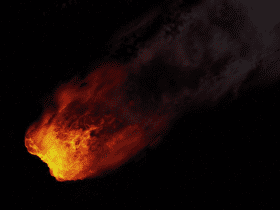Imagine this: scientists are dusting off billion-year-old rocks, hoping to solve one of the universe’s most perplexing mysteries—dark matter. Yes, these rocks, relics from Earth’s ancient history, might just hold the clues we need to confirm the existence of this elusive “stuff” that’s been evading us for, well, forever. For years, dark matter has been the universe’s worst-kept secret, with scientists pointing fingers at it every time gravity gets a little too “mysterious” for its own good. But finally, someone had the wild idea to get low-tech and go rock-hunting, and it could be a game-changer.
Why Rocks? And Why Now?
Let’s back up. Dark matter is, essentially, the universe’s invisible friend. We can’t see it, touch it, or smell it, but scientists swear it’s there because the math just doesn’t add up otherwise. Without dark matter, galaxies would likely fly apart, planets might not stick together, and we’d have a lot of explaining to do in the physics department. But finding it has been a bit like chasing shadows—until now.
In a plot twist fit for a science fiction novel, physicist Patrick Huber and his team at Virginia Tech decided to shift their gaze from high-powered particle accelerators to ancient rocks. The theory? Over billions of years, some particles from dark matter may have smacked into these rocks, leaving behind microscopic “bruises.” Imagine a cosmic fingerprint from a collision that happened when dinosaurs were just a distant dream. By examining these ancient rocks for telltale signs of displaced atoms, Huber’s team hopes to find the physical traces of dark matter’s path through our planet.
The Hunt for Cosmic Fingerprints
So, how does one go about finding dark matter’s calling card in a rock? Picture this: each rock is like a cosmic diary, recording every encounter with stray particles over millions of years. Every impact rearranges atoms ever so slightly, leaving what scientists call a “track” in the rock’s crystal structure. The older the rock, the more encounters it’s logged. The hope is that some of these tracks were caused by dark matter particles.
Huber’s team is setting up shop in Virginia Tech’s Robeson Hall, where they’re using high-tech imaging tools to analyze these crystal tracks. The plan is to isolate tracks left by known particles, like cosmic rays. Once these familiar marks are subtracted, whatever remains might just be the elusive signs of dark matter.
Vsevolod Ivanov, a quantum systems specialist, is handling the rock analysis like a detective sifting through clues. “We’ll take a crystal that’s been exposed to particles for millions of years,” Ivanov explains, “and we’ll subtract everything that we know. Whatever’s left, well, that could be dark matter.” It’s kind of like peeling back layers of wallpaper in an old house to uncover some ancient, cryptic graffiti—only, in this case, it’s graffiti from the universe itself.
“It’s Insane. I Want to Do It.”
What’s driving these scientists to dig into the Earth’s crust, literally? Huber himself admits that this isn’t the usual route for someone grappling with a midlife crisis. “Most people in their midlife crisis might get a sports car or take up skydiving. I got a lab.” And thank goodness for that. Because if Huber and his team succeed, they might just crack open a mystery as old as the stars.
So why should we care? For one, understanding dark matter could transform our grasp of the cosmos, potentially reshaping everything from theoretical physics to the very way we understand our place in the universe. And who knows, maybe next time you pick up a pebble, you’ll wonder if it’s got its own little secrets about the dark matter floating around us.
The idea of finding dark matter in ancient rocks might sound a bit, well, “out there.” But sometimes, the most groundbreaking discoveries come from looking at things a little differently—like, say, under a microscope, millions of years after the fact. And who knows, maybe one day we’ll be skipping stones across a lake, casually holding in our hands the universe’s deepest, darkest secrets.












Leave a Reply